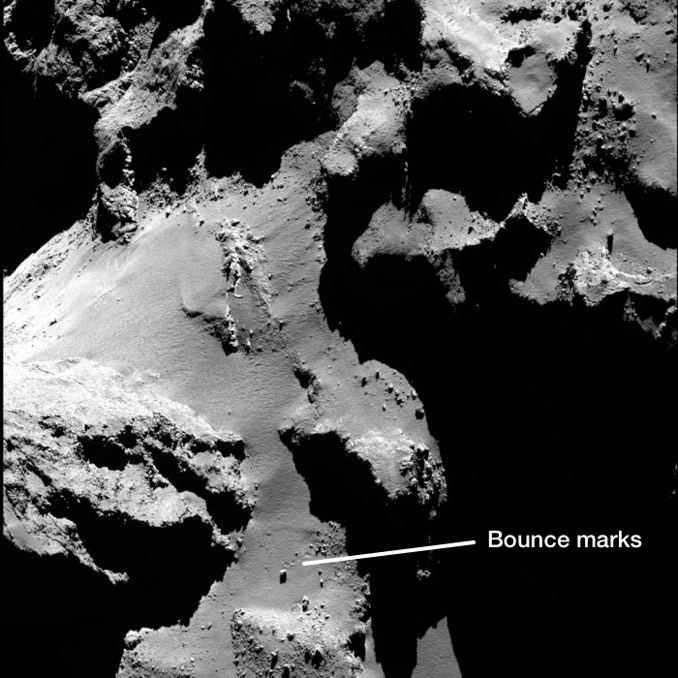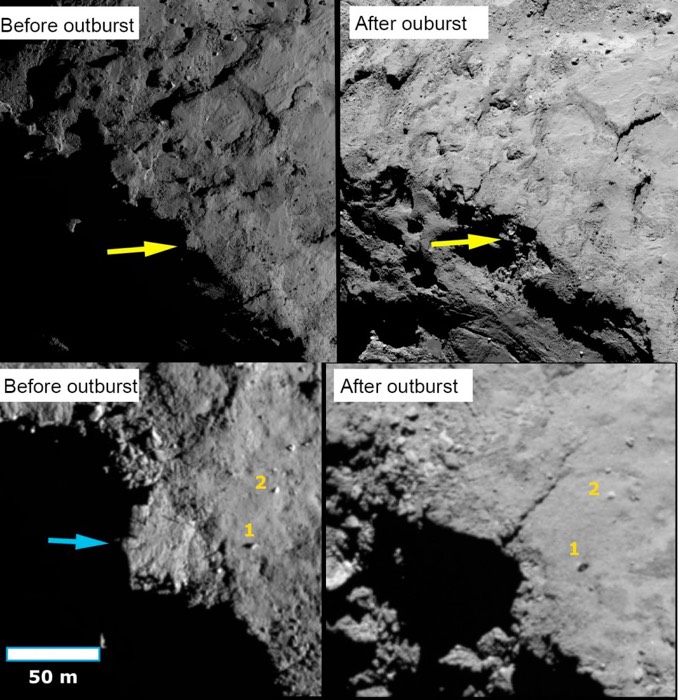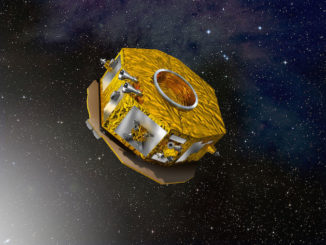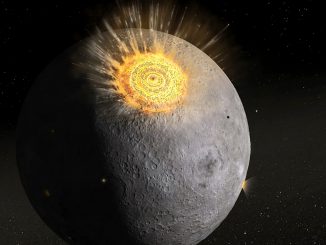
Researchers sifting through a treasure trove of 76,000 high-resolution photos of comet 67P/Churyumov-Gerasimenko that were captured during the European Space Agency’s Rosetta mission have found striking images of a huge boulder bouncing across the surface and clear signs of a cliff that collapsed as the comet neared the Sun.
The research is intended to shed light on the material properties of the comet, the strength of rocks and boulders and the interactions that trigger landslides and other major changes as the comet’s activity peaked during a visit to the inner solar system.
One such bouncing boulder, measuring some 10 metres (33 feet) across, was spotted near the base of a 50-metre-high (164-foot-high) cliff, leaving “footprints” in the loose soil as it bounded along in the comet’s low gravity.

“We think it fell from the nearby 50-metre-high cliff, and is the largest fragment in this landslide, with a mass of about 230 tonnes (515,000 pounds),” said Jean-Baptiste Vincent of the German space agency’s Institute for Planetary Research. He presented the research at the European Planetary Science Congress in Geneva.
“So much happened on this comet between May and December 2015 when it was most active, but unfortunately because of this activity we had to keep Rosetta at a safe distance. As such we don’t have a close enough view to see illuminated surfaces with enough resolution to exactly pinpoint the ‘before’ location of the boulder.”
Studying the history of such boulders sheds light on the characteristics of the comet’s soil and the strength of the rocks, which are typically a hundred times weaker than freshly packed snows.

Another type of change observed by Rosetta is the collapse of cliff faces. A 70-metre-long (230-foot-long) section of the Aswan cliff was observed in July 2015. Now, Ramy El-Maarry and Graham Driver of Birkbeck, University of London, may have found an even larger event.
“This seems to be one of the largest cliff collapses we’ve seen on the comet during Rosetta’s lifetime, with an area of about 2,000 square metres (21,500 square feet) collapsing,” said Ramy. The collapse occurred in the southern hemisphere during the comet’s closest approach to the Sun when activity in that region was at or near its peak.
“Inspection of before and after images allow us to ascertain that the scarp was intact up until at least May 2015, for when we still have high enough resolution images in that region to see it,” said Graham. “The location in this particularly active region increases the likelihood that the collapsing event is linked to the outburst that occurred in September 2015.”



